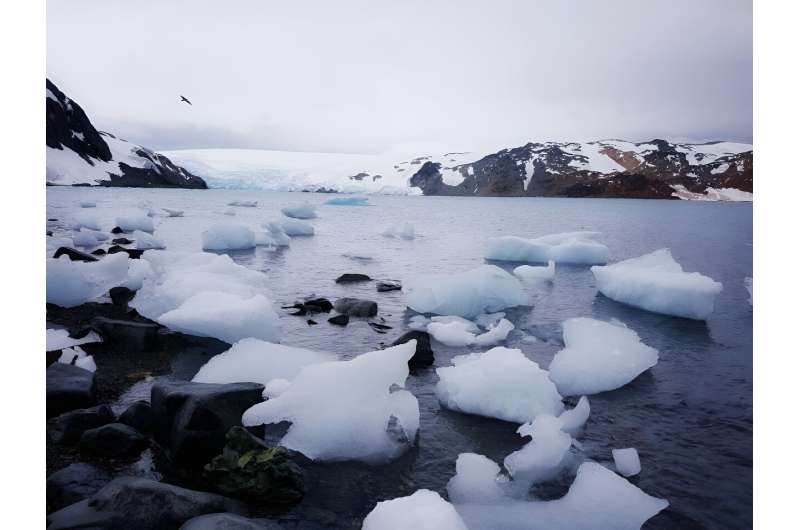This article has been reviewed according to Science X's editorial process and policies. Editors have highlighted the following attributes while ensuring the content's credibility:
fact-checked
peer-reviewed publication
proofread
Seawater dynamics in an underexplored Antarctic fjord

About 150 kilometers north of the Antarctic Peninsula lie the South Shetland Islands, a cluster of more than a dozen islands that harbor glaciers, volcanoes, and a tundra ecosystem with penguins and seals. On the southwestern side of King George Island, glacial meltwater meets salty seawater in a narrow, little-explored fjord known as Marian Cove.
The flow of seawater into and out of fjords like Marian Cove plays a critical role in sustaining healthy Antarctic coastal ecosystems. However, climate change can alter seawater dynamics, and the Antarctic Peninsula region has been warming up much faster than the rest of the world.
Now, Yeonggi Kim and colleagues have conducted the first in-depth analysis of Marian Cove's basic oceanography, which could aid predictions about the regional effects of climate change. The research is published in the Journal of Geophysical Research: Oceans.
Between 2011 and 2021, the researchers visited Marian Cove multiple times aboard a ship, from which they took measurements of temperature, salinity, and current speed at various locations and water depths. They also mounted instruments at the entrance to the fjord that continuously collected data from 2018 to 2021. The northeastern end of Marian Cove is closed, and its southwestern end opens into a larger bay.
Their data analysis revealed that wind has the greatest influence in determining the direction of the fjord's surface current, whereas deeper currents flow in the opposite direction. Easterly winds, blowing from within the fjord out into the bay, play the biggest role in increasing the fjord's salinity because they move fresh surface water out of Marian Cove and cause salty water to flow in beneath the surface.
On average, the analysis showed, water stays in Marian Cove for about nine days before it flows out into the bay. However, when easterly winds are particularly strong, water may stick around for less than two days, which could limit the growth of phytoplankton.
Prior research has already suggested that climate change will shift the ecology of bottom-dwelling organisms in Marian Cove. These new findings set the foundation for further insights into the future of this fjord—and others like it.
More information: Yeonggi Kim et al, Properties and Mechanisms of Seawater Exchange in Marian Cove, King George Island, West Antarctic Peninsula, Journal of Geophysical Research: Oceans (2023). DOI: 10.1029/2023JC020111
Journal information: Journal of Geophysical Research
Provided by Eos
This story is republished courtesy of Eos, hosted by the American Geophysical Union. Read the original story here.




















